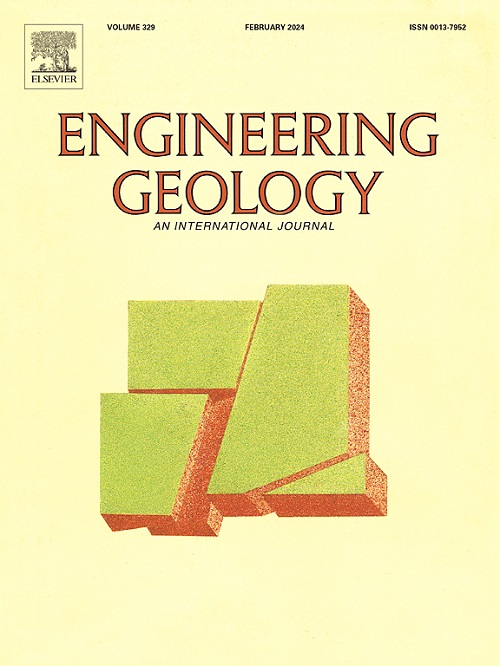Failure process analysis of a catastrophic landslide in Zhenxiong triggered by prolonged low-intensity rainfall using centrifuge tests
IF 6.9
1区 工程技术
Q1 ENGINEERING, GEOLOGICAL
引用次数: 0
Abstract
Rainfall-induced landslides are a prevalent geological hazard worldwide, causing severe ecological and socio-economic impacts. While they can be triggered by extreme rainfall, typhoon storms, and prolonged low-intensity rainfall, the damage caused by landslides from prolonged low-intensity rainfall is often underestimated. However, catastrophic landslides can occur when such rainfall couples with fragile geological conditions and groundwater seepage. In January 2013 and January 2024, two devastating landslides occurred in Zhenxiong County, each causing over 40 fatalities. Both events occurred during Zhenxiong's unique prolonged rainy (snowy) season, drawing significant attention from researchers. We conducted a centrifuge test to simulate the failure process of the Zhaojiagou landslide in 2013 under the influence of prolonged low-intensity rainfall and groundwater seepage. Furthermore, the high mobility genesis and post-disaster deformation evolution of the disaster were analyzed based on ring shear tests and remote sensing interpretation. Our work reveals the destabilization behavior and failure characteristics of catastrophic landslides induced by prolonged low-intensity rainfall. It also offers insights into the coupling effect of geology, rainfall, and groundwater on small-scale landslides that turn into major disasters.
用离心试验分析了长时间低强降雨引发的镇雄特大滑坡破坏过程
降雨引发的滑坡是世界范围内普遍存在的地质灾害,造成严重的生态和社会经济影响。虽然极端降雨、台风风暴和长时间低强度降雨可能引发山体滑坡,但长时间低强度降雨造成的山体滑坡造成的破坏往往被低估。然而,当这种降雨与脆弱的地质条件和地下水渗漏相结合时,可能发生灾难性的山体滑坡。2013年1月和2024年1月,镇雄县发生了两次毁灭性的山体滑坡,每次造成40多人死亡。这两起事件都发生在振雄独特的长雨季(雪季),引起了研究人员的极大关注。采用离心试验模拟了2013年长时间低强度降雨和地下水渗流影响下赵家沟滑坡的破坏过程。基于环剪试验和遥感解译,分析了灾害的高流动性成因和灾后变形演化。揭示了长时间低强度降雨诱发的灾难性滑坡失稳行为和破坏特征。它还提供了地质、降雨和地下水对小规模滑坡演变为重大灾害的耦合效应的见解。
本文章由计算机程序翻译,如有差异,请以英文原文为准。
求助全文
约1分钟内获得全文
求助全文
来源期刊

Engineering Geology
地学-地球科学综合
CiteScore
13.70
自引率
12.20%
发文量
327
审稿时长
5.6 months
期刊介绍:
Engineering Geology, an international interdisciplinary journal, serves as a bridge between earth sciences and engineering, focusing on geological and geotechnical engineering. It welcomes studies with relevance to engineering, environmental concerns, and safety, catering to engineering geologists with backgrounds in geology or civil/mining engineering. Topics include applied geomorphology, structural geology, geophysics, geochemistry, environmental geology, hydrogeology, land use planning, natural hazards, remote sensing, soil and rock mechanics, and applied geotechnical engineering. The journal provides a platform for research at the intersection of geology and engineering disciplines.
 求助内容:
求助内容: 应助结果提醒方式:
应助结果提醒方式:


